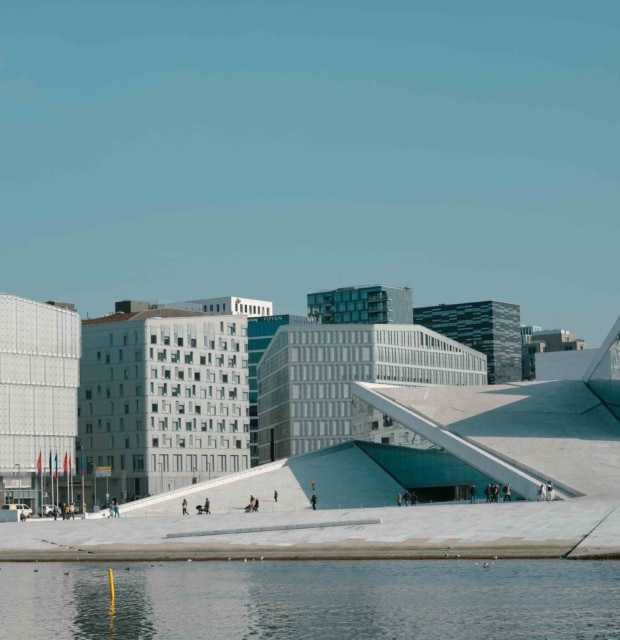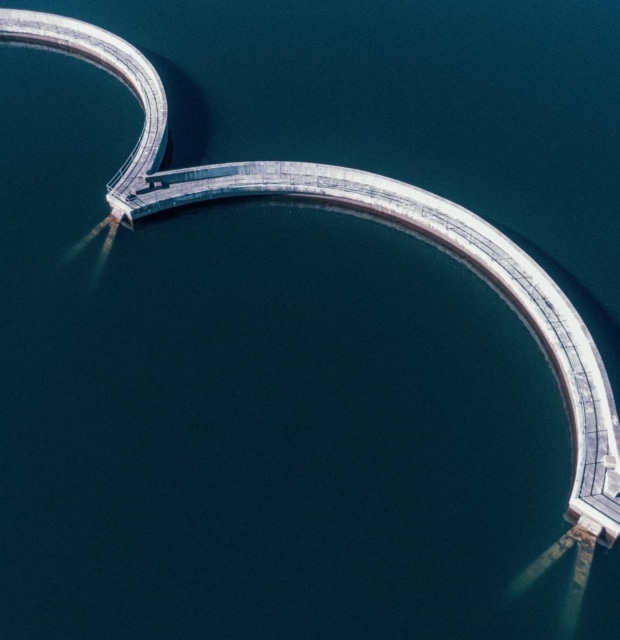
Strategy and sustainability
Our strategy towards 2035
In 2022, a new and larger Group looked further ahead in its strategy work. Our objective was to establish a long-term strategy that sets the direction for Hafslund towards 2035. With long licensing and development processes and exponential changes within electrification and green transition, it is absolutely essential for Hafslund to look far ahead when planning new growth initiatives and to work on strategy with a 10-15 year perspective.
It is our view that the starting point for the strategy work has to be the future and what we believe the world will look like in 2030 and 2035. Hafslund’s strategy is therefore based on an external analysis of important trends for the future in which the Group will operate. We then turn our gaze back on ourselves and consider how we can best face this future – what we want to focus on and what we need to do to succeed.
Hafslund’s focus areas and goals for sustainability are fully integrated with the Group strategy, and a materiality analysis that assesses the Group’s impact on people and the environment, ESG risks and opportunities is a vital part of defining where we stand today and how we wish to develop.
The Group’s strategy towards 2035 is based on five strategic focus areas; we will contribute with strong renewable growth, balance the energy system of the future and contribute to creating greener and smarter cities. In addition, Hafslund shall have the best minds.

External analysis
We have studied a number of trends in order to understand the reality that Hafslund will have to deal with in the future. Some of the trends take a macro perspective, such as the development of climate and nature challenges for the planet and the development of new technologies, while others are linked to our closer surroundings, such as the consideration of our owner the City of Oslo and what is important for consumers and employees in Norway.

Climate and nature positive
As one of the largest producers of renewable energy and district heating in the Nordic region, Hafslund has a responsibility for making a positive contribution to both the climate and nature. Both renewable energy and biodiversity are critical for future life on our planet.
At Hafslund, we are proud of our renewable production portfolio. At the same time, there is an urgent need to create a sustainable balance between the development of new renewable energy and the impact this has on nature. The goal of nature positivity is particularly ambitious for Hafslund as a developer of renewable energy. We do not have all the answers for how to achieve this, however we will do our utmost to find solutions for how we can compensate and mitigate encroachment on nature.
Towards 2035 we will
- Minimise emissions in our own operations
- Remove CO₂ from the natural cycle
- Protect nature and the environment when developing new facilities
- Compensate for our encroachments on nature
Vesentlige bærekrafttemaer
- The road towards climate positivity
- The road towards nature positivity
- Efficient and circular use of materials and resource utilisation
- Adapting to climate change

Strong growth in renewable energy
The green transition has created an enormous need for new renewable energy, and the increasing scarcity of renewable energy is leading to rising energy prices.
Without increased energy production and lower price levels, Norway will not succeed in being an attractive location for new green industries and important workplaces. Hafslund wants to be part of the solution to this and wants to develop new renewable energy within hydropower, wind and solar in Norway and the Nordic region.
Towards 2035 we will
- Expand existing and build new hydropower
- Become a leader in the development and expansion of renewables projects within solar, wind and offshore wind
- Explore opportunities in Norway and the Nordic Region
- Actively participate in the debate on framework conditions and energy development
Important sustainability topics
- Production of clean energy
- Investments in clean energy
- Driving force for renewable energy through good stakeholder dialogue

Balance for the energy system of the future
All flexible fossil energy sources in Europe's energy mix need to be replaced with renewable energy sources to achieve the target of net zero emissions. Most of the current production technologies within renewable energy are not possible to regulate. However, the energy system needs to be in balance and this balance has to involve flexible sources or means of storage.
Hydropower is regarded as an enormous battery with flexible reservoir capacity, and Hafslund can therefore be said to be a driving force for the achievement of balance. There is an increasing need for flexible power, and Hafslund will strengthen the Group’s ability to contribute to balance in the energy system.
Towards 2035 we will
- Increase our ability to regulate hydropower
- Develop distributed energy solutions
- Develop solutions for aggregation and management of production, consumption and storage
- Act faster in existing and new balancing markets using intelligent models
Important sustainability topic
- Security of supply
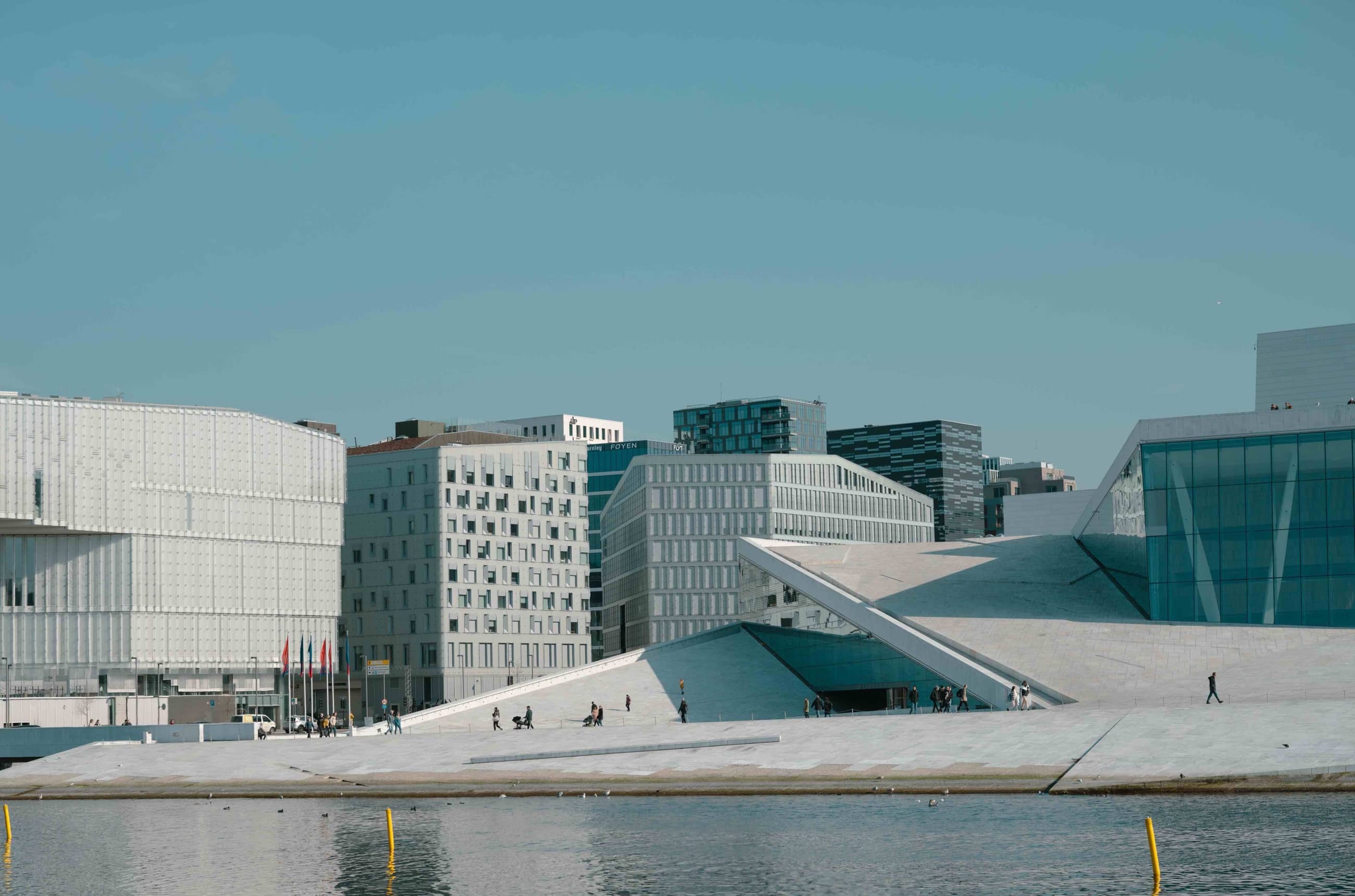
Smart and green urban development
Society is electrifying, and we are using more and more electricity. Access to renewable energy is increasing, however consumption is increasing even faster. At Hafslund, our objective is to facilitate electrification that contributes to greener and smarter cities.
Hafslund is an energy and infrastructure group that, in addition to being a major producer of renewable energy, is contributing towards providing the towns and cities of the future with central thermal energy systems and solutions that contribute to electrification and energy efficiency. Hafslund is working to establish smart digital energy solutions that contribute to efficient and simple energy consumption, as well as stable and predictable energy prices.
Towards 2035 we will
- Develop solutions within electrification and energy efficiency that create value for industry and energy efficiency
- Develop the thermal energy system in Oslo and the surrounding area
- Focus on business concepts at the intersection between a smart city and the energy system
- Be an active driving force for green industries and jobs in Norway
Important sustainability topic
- Electrification, energy efficiency and simple green solutions
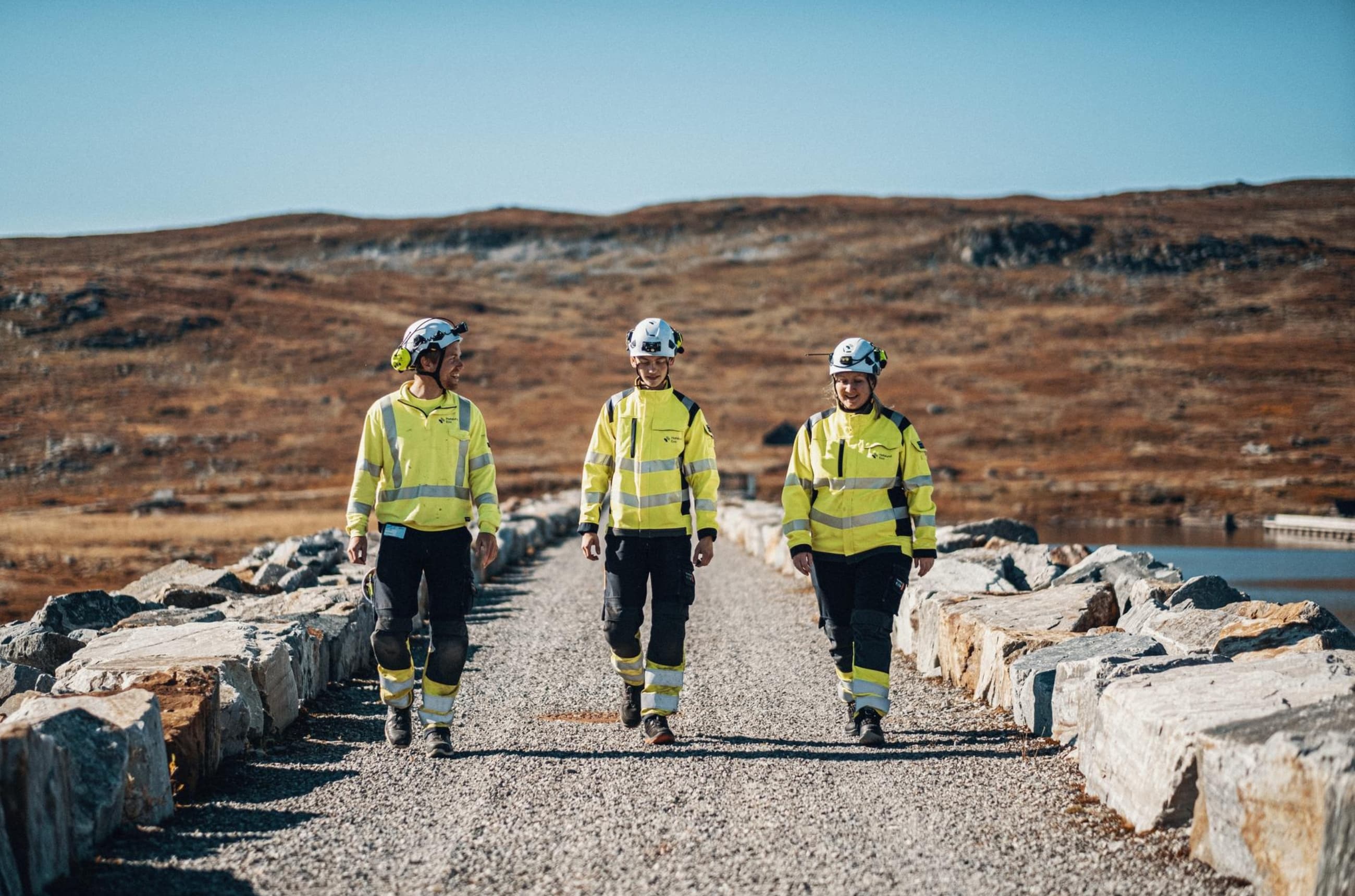
Good minds are the key
Without the best minds, we will not succeed in any of the other ambitious initiatives and targets we have set ourselves for 2035. That is why we will work to ensure that Hafslund becomes the workplace where the talent comes knocking on our door.
We take an interest in our employees and strive to facilitate a working day in which individuals achieve their potential, are strongly motivated and feel that they are developing. We want it to be meaningful and enjoyable to work at Hafslund, and it is our desire that Hafslund shall be a place where employees envisage having a long, exciting and developing career.
Towards 2035 we will
- Ensure an open, safe and secure working environment
- Strengthen diversity
- Focus on long-term and targeted development of managers and employees
Important sustainability topics
- Safety for our employees
- Attractive and developing workplace
- Space for differences and equal opportunities for all
A sustainable Hafslund
Hafslund has a sustainability strategy that is integrated into the Group’s strategic focus areas. The Group has identified important areas of sustainability using a double materiality analysis based on the principles of the EU Corporate Sustainability Reporting Directive (CSRD). The analysis provides an in-depth understanding of the Group’s impact on people and the environment, and the sustainability risks and opportunities that exist for Hafslund.
Materiality analysis sustainability
In 2022 Hafslund conducted a double materiality analysis based on the principles set out in the forthcoming EU Corporate Sustainability Reporting Directive (CSRD). The analysis provides an in-depth understanding of the Group’s impact on people and the environment, and the sustainability risks and opportunities that exist for Hafslund.
A double materiality analysis includes two sub-analyses; an impact analysis and a stakeholder and megatrend analysis. The impact analysis reveals how Hafslund’s business activities impact people, society and the environment. The stakeholder and megatrend analysis includes a description of key stakeholders and the expectations and requirements they set for the Group, as well as an assessment of megatrends. Megatrends are strong transformative forces that will influence how Hafslund works with sustainability in the future. The insights obtained from the analyses formed the basis for deciding on and establishing important topics, risks and opportunities within sustainability.
Based on the double materiality analysis, Hafslund has determined important topics that form the basis for corporate sustainability management, and goals, measures, action plans and KPIs have been defined for each topic. These topics are presented under.
Sustainable Development Goals
Hafslund supports the United Nations Sustainable Development Goals (SDGs), and the Group's operations have an impact on several of the SDGs. The Group has concentrated its attention on the sustainable development goals that have the greatest impact, and has therefore placed a particular focus on the following five SDGs.

Hafslund’s significant sustainability areas
The road towards climate positivity
The world is facing an enormous challenge in being able to achieve the transition to a zero-emission society. Hafslund’s most important climate contribution is the production of renewable energy.
Hydropower, solar and wind energy are means of clean energy production that have low emissions when compared to the average greenhouse gas emissions from European power production. In the district heating and cooling operations, local excess energy, which would otherwise have been lost, is used to produce hydronic district heating and cooling.
Our approach
Climate positive by 2030
Hafslund aims to become climate positive by 2030. In addition, the Group has the goal of reducing Scope 1 and 2 emissions by 90 per cent and Scope 3 emissions by 50 per cent within the same timeframe. The goals are based on the Group’s guiding principles. The principles also affirm that the Group will continuously work to reduce its impact on the climate and that environmental requirements shall be set for all procurements where relevant by 2025.
The Group’s carbon footprint
The Group’s carbon footprint is related to waste incineration, use of fuels and propellants, emissions of SF6 gas and emissions in the Group’s value chain. Hafslund Oslo Celsio primarily uses waste heat, electric boilers and renewable fuels such as wood pellets, bio-oil and biodiesel to produce heat. An important source of waste heat is the waste incineration plants at Klemetsrud and Haraldrud. They produce large point emissions in Oslo, however if the waste had become landfill, the greenhouse gas emissions would have been about 75 per cent higher than what is emitted from the incineration plants. Carbon capture at Klemetsrud, see “Our measures”, will eliminate the Group’s largest emissions and Hafslund Oslo Celsio will have negative emissions when the plant is brought online, since the waste facility also burns biogenic waste. A small proportion of liquefied natural gas (LNG) is still used for producing heat. The proportion of LNG is approximately 1.5 per cent per year, and we are actively working towards a planned phase-out.
Greenhouse gas emissions in accordance with the Greenhouse Gas Protocol
Hafslund calculates and reports greenhouse gas emissions in accordance with the internationally recognised framework “Greenhouse Gas Protocol – A Corporate Accounting and Reporting Standard”.
In connection with the 2022 reporting, Hafslund carried out an assessment and expansion of Scope 3 emissions in accordance with the principles of the GHG. The reported Scope 3 emissions were therefore significantly higher for 2022 than they were in 2021. The 2022 figures also include Hafslund Celsio. There was not available data for all emissions categories, and areas of improvement were identified as part of the process. Based on these findings, during 2023 Hafslund will work to improve data quality and completeness of the reporting.
The largest emissions in Scope 3 are from categories 1 (Purchased goods and services), 2 (Capital goods) and 15 (Investments) of the GHG. The emissions are calculated based on various activity data, including accounting data from financial systems, quantity data from the largest renewable energy projects and energy data used in the district heating facility.

Hafslund’s most important climate contribution is the production of renewable energy.
Our goals and status 2022
| Goal | Result 2022 | Satisfaction | Remarks |
|---|---|---|---|
| Become climate positive by 2030 | 459,554 tonnes of CO₂e | Emissions include Scope 1, 2 and 3. Scope 2 includes market-based emissions figures. | |
| 90% reduction in Scope 1 and 2 by 2030 | 351,663 tonnes of CO₂e | 42 per cent reduction in Scope 1 and 2 compared to 2019. The base year for the goal is 2019. Market-based Scope 2 has been used. For 2022, Hafslund Oslo Celsio did not purchase guarantees of origin for its own electricity consumption, which resulted in large Scope 1 emissions. The Group's goal is for all electricity consumption to be covered by guarantees of origin in the future. | |
| 50% reduction in Scope 3 by 2030 | 107,891 tonnes of CO₂e | Scope 3 has been expanded for 2022 figures. The base year for the goal is 2019, but emissions in 2019 have not yet been recalculated in accordance with the new method of calculation. Therefore, a percentage reduction was not available for Scope 3 on the reporting date. Goals and calculation of base year shall be developed in 2023. | |
| 100% electric vehicle fleet by 2025 | 33% electric vehicles | The challenges relate to long delivery times and a shortage of electric models for four-wheel drive vans and pickups. |
The road towards nature positivity
Hafslund recognises that loss of nature and biodiversity is an equally serious challenge to the world as climate change.
As a producer of renewable energy, Hafslund is dependent on natural resources. However, the development of renewable energy involves encroachment on nature. For us, nature positivity is about minimising the negative impact of our operations and taking steps to give back and compensate for our encroachment on nature.
Hafslund will be “nature positive” in 2035. This means that we have to better facilitate the biodiversity around our power plants, and ensure that new development and rehabilitation projects have the least possible impact on biodiversity and land use. We are working to improve conditions in areas that are already affected. The Group will also look for methods for restoring nature.
The aforementioned goal and principles are based on the Group’s governing principles.
Our approach
Taking nature into consideration in connection with new developments
Hafslund is working to reduce land use when developing new projects. It is particularly important to avoid areas with vulnerable nature, and assessments related to habitat types and biodiversity are always included as part of the project implementation. Requirements are also set for natural revegetation, with the reuse of top soil to ensure that the construction area is restored in a manner that protects species, habitats and ecosystems. Initiatives for improving the conditions for fish in the watercourses are planned in such a way that the best available technology is used.
In order to get closer to achieving the goal of nature positivity, further work will be carried out to identify measures and guidelines that work towards minimising the impact new developments have on nature.
Monitoring and assessing conditions in existing watercourses
Assessing and monitoring the condition of watercourses are important for documenting the environmental status of regulated watercourses. The issues relating to each watercourse will determine the monitoring frequency, methods and scope.
The assessments provide important information and knowledge regarding the degree of impact and development in regulated watercourses.
Better conditions for fish in the watercourses - spawning grounds, fish migration and minimum water flow
Hafslund Eco Vannkraft is implementing a number of measures to improve conditions for fish in regulated watercourses. To ensure that the measures work as intended, there is close cooperation with research institutions, including the Norwegian Institute for Nature Research (NINA) and NORCE LFI, Norwegian Research Centre, which regularly evaluate the status and impact of the measures in the watercourses.
Restoration and establishment of spawning grounds are important for improving the spawning conditions for fish and other organisms that live in the watercourses. There are primarily three knowledge-based measures which have proven to have a good effect: the laying out of spawning gravel, harrowing (ripping) of the riverbed to loosen up the bottom sediments and opening of tributaries to the main river.
Good solutions for fish migration past power plant dams are particularly important for fish populations that need to be able to pass through to fulfil their life cycle. This applies, for example, when adult fish have to migrate to spawning grounds to reproduce, and the young fish have to migrate back to feeding areas in order to grow. We have analysed all of our power plant dams in the Glomma and Trysil watercourses, and drawn up an action plan to improve the conditions for fish migration. Automatic fish counting on the fish ladders provides us with an important knowledge base, and as a result relevant measures are implemented. There is also a focus on improving knowledge and implementing measures in other watercourses with power plant dams and fish migration.
In addition to statutory minimum water flow and environmentally adapted water flow, when concerning watercourses that have special conditions, for example, populations of large trout stocks like we have in Gudbrandsdalslågen or salmon and sea trout in Vassbygdelvi in the Aurland watercourse, there may be a need for voluntary release of water to ensure suitable conditions for life in the water. The amount of water that is released and the timing of the releases are evaluated based on local conditions and results from assessments of the connection between habitat availability and water flow.
Emissions into the air, soil and water
Hafslund Oslo Celsio’s waste incineration plants and heating plants use various fuels that cause local air pollution (NOx, dust etc). All of the largest facilities have strict emission requirements to prevent the emissions from causing harm to health or the environment. The necessary cleaning equipment is installed where required. A number of measurement, monitoring and reporting systems are used to control emissions. Measures are implemented immediately, and serious non-conformities are reported to the Norwegian Environment Agency if the limit values are exceeded.
There is a risk that Hafslund Eco Vannkraft could discharge oil and chemicals into soil and water. This is reported and followed up through the company’s incident reporting system and measures are implemented immediately.

Our goals and status 2022
| Goal | Results 2022 | Satisfaction | Remarks |
|---|---|---|---|
| Become nature positive by 2035 | - | New strategic initiative in 2022. The Group continued working to define and establish measurement parameters. | |
| All facilities must be operated without serious environmental non-conformities or violations of licence conditions | 3 incidents | There were three violations of licence conditions related to water flow and reservoir levels during 2022. All incidents were reported to the NVE. | |
| Restore and improve areas in regulated watercourses | 847 m2 | New spawning grounds in the Aurland watercourse. | |
| Monitor and improve fish migration solutions in regulated watercourses | 10 fish ladders with monitoring, 3 measures initiated | There are currently 10 fish ladders with monitoring, and three practical measures were taken in 2022 at the ladders in Høyegga, Storsjødammen and Sagnfossen. |

Efficient and circular use of materials and resource utilisation
The world has limited resources, and in order to reduce greenhouse gas emissions and avoid unnecessary loss of nature, it is essential that we succeed with circular solutions and efficient resource utilisation.
Our approach
Hafslund’s energy production is renewable and essentially circular. Electric power is produced using the renewable resources of water, wind and sun, which are part of the Earth’s natural cycle. Waste heat from waste incineration, data centres and sewage is used to heat homes and commercial buildings. Metals from the bottom ash following incineration are further processed into new raw materials.
While the Group’s core business is renewable and circular, there is still potential for improvement. Hafslund Oslo Celsio uses a small proportion of non-renewable fuels, and the Group is a major purchaser of goods and materials that require natural resources and result in waste. Therefore, going forward, Hafslund shall place an emphasis on circularity in connection with procurements and will review routines for sorting and minimising waste. Hafslund Oslo Celsio is working on cutting its use of non-renewable fuels.
Our goals and status 2022
| Goal | Results 2022 | Satisfaction | Remarks |
|---|---|---|---|
| Increase sorting rate | 89% | In 2023, the Group will set quantitative targets for circularity. | |
| Increase the share of circular solutions in purchased goods and materials | - | In 2023, the Group will set quantitative targets for circularity. |
Adapting to climate change
One of the United Nations’ six climate goals is adapting to climate change, which is already being felt through changing climate and more frequent extreme weather.
In a changing world, it is important to have a strategy that is adapted to the changes that are coming and to regularly assess risk and implement adapted measures. Climate risk analyses were carried out for the Group in both 2021 and 2022. In addition, emergency preparedness work related to extreme weather has been carried out for many years, without this being specifically referred to as physical climate risk.
The analysis from 2022 is partly based on new information about the climate status from the Intergovernmental Panel on Climate Change (IPCC). The climate risk analysis that has been carried out was based on some of the principles of the Task Force on Climate Related Financial Disclosures (TCFD), and both physical climate risk and transition risk have been reviewed for the entire assessed value chain. A summary of the work is shown in the table below. The 2022 analysis did not include Hafslund Oslo Celsio, however the company will be included in the Group’s continued work with climate risk.
Did you know that...
In 2022, the Intergovernmental Panel on Climate Change (IPCC) released the two most recent interim reports from the Sixth Assessment Report, which form the most important scientific basis for the status of climate change.
The message was disheartening and demonstrated that climate change is already causing destruction to people and nature and poses a threat to our livelihood and the state of the planet. The IPCC’s assessment is that the effects of climate change on nature are greater and more extensive than previously thought.
To succeed, the world must succeed at three things at the same time:
- Limit warming through rapid cuts in emissions and increased capture of greenhouse gases.
- Adapt society and nature to the new changes we are being impacted by.
- Ensure sustainable development in line with the United Nations Sustainable Development Goals.
Climate risk at Hafslund
| PHYSICAL CLIMATE RISK | TRANSITION RISK | |
|---|---|---|
| • Extreme weather leads to breakdowns or reduced access to facilities | • Major price fluctuations as a result of extreme weather situations and rapid restructuring lead to political market control and reduced revenues | |
| • Harm to personnel or third parties as a result of extreme weather or changing precipitation patterns | • Stricter requirements from government authorities for project implementation due to increased environmental considerations | |
| • Energy trading and project models based on statistics do not adequately predict climate change | • New requirements from government authorities for dimensioning facilities, and for operating facilities | |
| • Delivery shortages due to supply line disruptions following extreme weather events | • Increased bottlenecks as a result of increased consumption in Southern Norway | |
| • Increased bottle necks as a result of extreme weather | • New technology and new markets lead to increased competition | |
| Measures | Measures | |
| • Assess the robustness and vulnerability of facilities with a view to there being more wind and extreme conditions | • Actively engage in framework and policy work | |
| • Clear marking of facilities. Regular inspection of vulnerable areas | • Focus on impact on climate and nature in projects | |
| • Climate-adjusted statistics | • Climate surcharge in project planning | |
| • Continually improve models and analyses | • Strategy with focus on growth in renewables, green solutions, climate and nature, and being a balancing actor | |
| • Evaluate strategy for spare parts and use of similar components | ||
| • Actively engage in framework and policy work | ||
| Risk | Risk | |
| Medium | Medium |
Production of clean energy and future investments
Energy production through hydropower has been part of the Group’s core business since 1898. Since then, we have added more sources of energy to the portfolio. The acquisition of Hafslund Oslo Celsio has resulted in thermal energy being the Group’s second largest business area, and offshore wind and solar will make further contributions to Hafslund’s production of renewable energy.
The manner in which the Group works with production and investments in new energy is described in the reference to the Group’s business areas:
- Hafslund Eco Vannkraft is Norway’s second largest hydropower producer. Hafslund EcoVannkraft is the company that has developed the greatest amount of new hydropower over the past five years and is continuously engaged in further developing and upgrading existing facilities.
- Hafslund Oslo Celsio is Norway’s largest supplier of district heating and the company has major plans for growth within further development of the heating grid. Hafslund Oslo Celsio also aims to develop district cooling in Oslo, which has enormous potential in terms of energy efficiency and better land use.
- Hafslund Vekst operates the Group’s investments in offshore wind and solar, and manages the Group’s largest ownership interests. In 2022, the company entered into a partnership for the development of both large-scale solar and rooftop solar and the offshore wind partnership Blåvinge is preparing licence applications for the development of offshore wind in the North Sea. In addition, Hafslund Vekst invested in lake wind in Vänern in Sweden.

Driving force for renewable energy through good stakeholder dialogue
Hafslund collaborates with many different stakeholders, including both nationally and locally. It is important for all parts of our business activities to maintain good relations with our stakeholders in order to manage our impact, understand needs and safeguard Hafslund’s business activities in the best possible manner. Strategic stakeholder work is important for supporting the Group’s vision and ambitions for value creation, management, development and sustainability. Below is an overview of Hafslund’s most important stakeholders and how we work together with them.
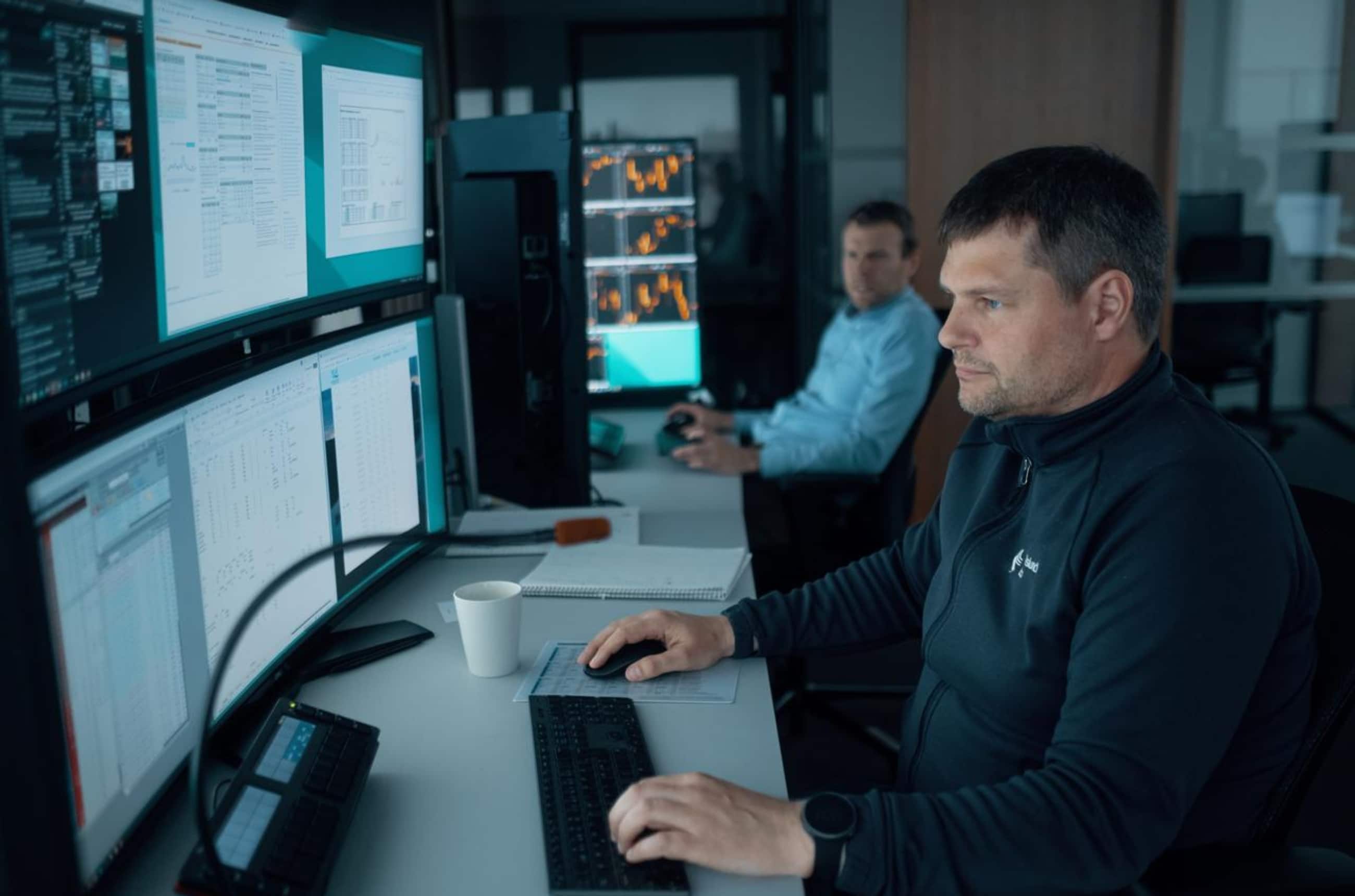
Security of supply
Security of supply is about balancing the power grid with the power that is demanded, and ensuring that we have enough power at all times. 2022 was a year in which Hafslund was made aware of what it means to be an actor that guarantees security of supply in society. For the second year in a row, we experienced a year of low precipitation and it became important to ensure that there were sufficient reservoir levels for the winter of 2023. From late September to mid-November, Statnett assessed the power situation as being tight for NO2 (Southern Norway) and NO5 (Western Norway). However, there was more precipitation during the final quarter and Statnett changed its assessment from a tight to a normal power situation in mid-November.
As Norway’s second largest power producer, with significant reservoir capacity, the hydropower business had a major focus on responsible resource planning throughout 2022. As always, the power situation, hydrological balance and reservoir levels were closely monitored, and Hafslund’s trading and production groups continuously adapted their operations as conditions changed.
The demanding power situation in 2021 and 2022 has highlighted the value of the water reservoirs and how they can be regarded as an enormous battery for the Norwegian power system. This flexibility will increasingly be in demand as new renewable energy sources that cannot be regulated emerge. Hafslund has clear targets for expanding reservoir capacity at the hydropower plants, and the Group is exploring how flexibility and adjustability can be ensured in the energy system of the future.

Electrification, energy efficiency and simple green solutions
Electrification, energy efficiency and simple green solutions are key drivers for creating the renewable Norway and sustainable society of the future. This is closely linked to the value chain of Hafslund’s core business within energy production. Hafslund Vekst is the major engine for finding new solutions and business concepts within electrification and energy efficiency.
Electrification
One of Hafslund’s major start-up success stories is the charging station company Elaway, which is helping to facilitate the electrification of the Norwegian, and eventually also the European, vehicle fleet by delivering charging solutions to housing cooperatives, condominiums and commercial buildings. The company builds, operates and rents out charging stations. Elaway is currently owned together with Eviny and has offices in Bergen, Stockholm, Munich and Oslo.
Hafslund Rådgivning offers consultancy assignments in areas such as electrification. The consultancy initiative was established in 2019 to make Hafslund’s expertise within electrification and energy available. Since its inception, the consultancy service has become one of Norway’s foremost centres of expertise in this area.
Energy efficiency
In the autumn of 2022 Hafslund Vekst invested in the company Volte, which will contribute to energy efficiency by helping companies reduce their electricity consumption. Volte is owned together with Eviny and is an electricity company for businesses that has clear and transparent agreements. Volte is also an energy technology company that utilises the opportunities that exist in energy data in order to develop analyses, products and services that assist companies with saving power.
The venture community at Hafslund Vekst has also invested in the company Smartwatt, which is a start-up based on energy efficiency. They offer AI-based control systems for optimised energy consumption in buildings.
Simple green solutions
Hafslund wants to make energy and green solutions simple for both private individuals and companies. Hafslund Vekst and Hafslund Oslo Celsio focus their work on end users, and are engaged in business development that will lead to simple and green solutions. Hafslund Rådgivning obtains knowledge about where the challenges exist and the business concepts that we scale, and the companies we invest in must reflect our ambition to make energy and sustainable lifestyles easier and smarter. We are curious about the solutions and believe that technology at the end-user level is an important part of a green transition.
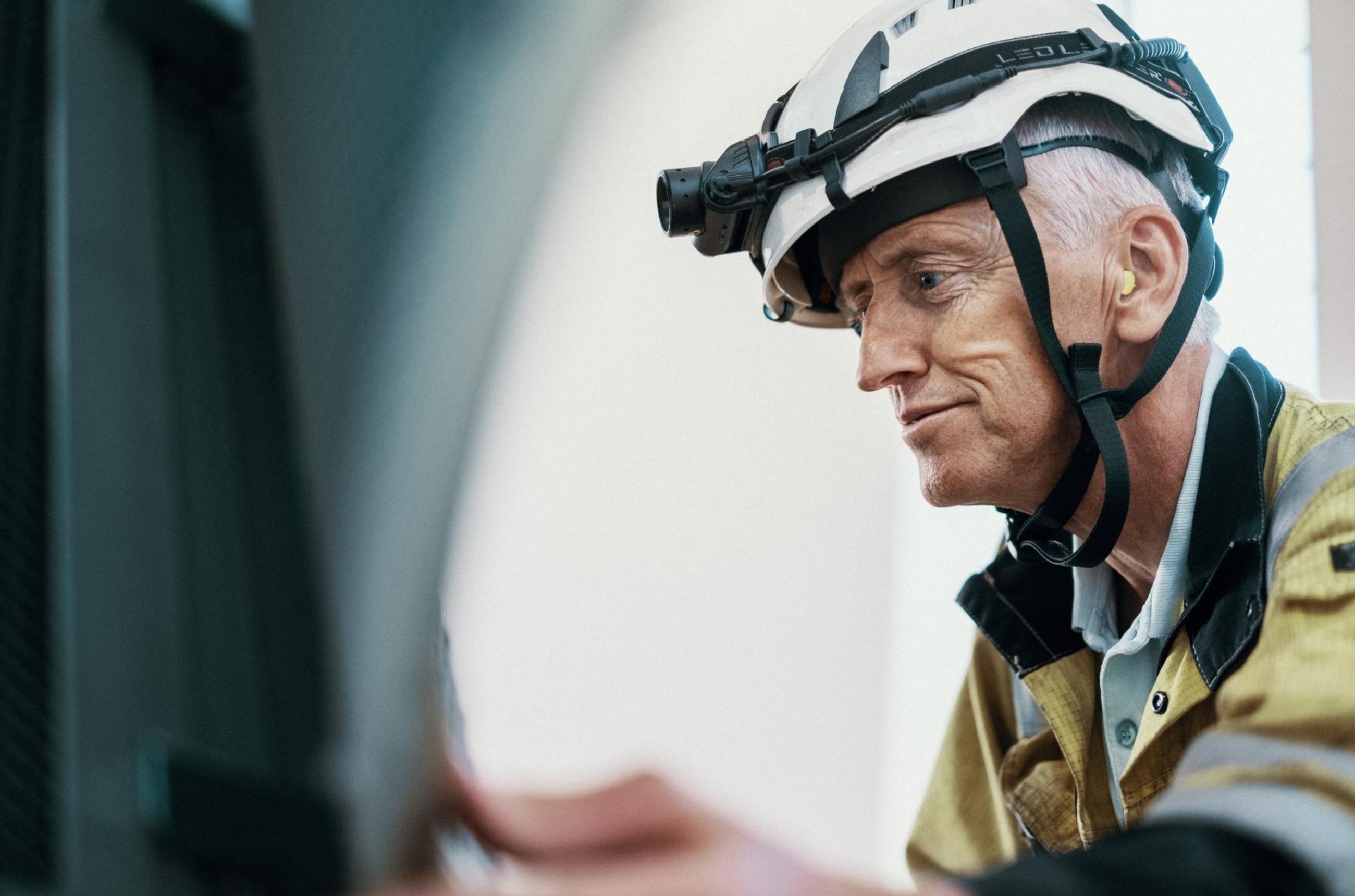
Safety for our employees
Our employees must be safe while at work. This means that health, safety and the environment (HSE) need to be ensured in all of our activities.
Our approach
All activities at Hafslund must be carried out without harm to human life, health or well-being. The Group’s guiding principles for HSE form the basis for the HSE work. Among other things, the principles affirm that HSE is fundamental to the planning, implementation and evaluation of all activities, and that everyone should work to continuously improve safety and report nonconformities. The same HSE requirements in our own activities also apply to contractors.
Work on preventive HSE measures has intensified in recent years, and documentation is followed up to ensure that progress is being made. This work will continue going forward, while active efforts will be made to ensure that managers at all levels of the organisation lead the way in terms of safety work, both at strategic and operational levels.
The work in the Group’s projects, operations and maintenance involves the risk of injury and undesirable incidents for both our own employees and hired personnel. For Hafslund Eco Vannkraft, the greatest physical risks are considered to include work operations on the mountain under shifting weather conditions, with live electric systems, work at height, heavy lifting, heavy equipment and during transport. For Hafslund Oslo Celsio, the greatest physical risk is associated with employees being exposed to very hot water under high pressure.

Our goals and status 2022
| Goal | Results 2022 | Satisfaction | Remarks |
|---|---|---|---|
| No harm to the life, health or well-being of our own employees or contractors' employees | H1: 1,2 H2: 2,9 F: 3,5 |
Attractive and developing workplace
In a changing labour market, with low unemployment and competition for the best minds, we need to ensure that Hafslund is an attractive and developing workplace for the recruitment and retention of our employees. In 2022, we started working with a more insight-based approach in order to understand and learn what employees value to enable us to actively design Hafslund as a better workplace. The Group is a large employer that offers various development programmes for employees at all levels of the organisation. Work on strategic skills development, joint development processes and the strengthening of critical expertise in various professional and specialist areas has been the focus over the past year.
Our goals and status 2022
| Goal | Results 2022 | Satisfaction | Remarks |
|---|---|---|---|
| High employee satisfaction (above the index) | 8.3 | The index is 7.6, which means that 8.3 is a good score. | |
| Sick leave < 3.5% | 3.8% | 3.8% is a low level of sick leave when compared to the national average. | |
| Continual leadership development for managers at all levels | Yes | Leadership development for managers at all levels was carried out in 2022. |
Space for differences and equal opportunities for all
One of our core values is openness. This means that we value difference and diversity. We welcome change and we serve each other well by sharing experiences and knowledge. We believe that diversity and inclusion pay off, both in terms of greater innovation and better value creation.
The need to be seen, to be treated as equals and to be able to be who we are, is the same for everyone, irrespective of sexual orientation, ethnicity, gender or age. Diversity is both what you see and what you do not see. The long-term work we have started with diversity is about increasing our level of expertise and tapping into our curiosity. We want to use insights about our organisational culture, leadership, patterns and language to enable us to take active steps and work systematically with diversity in the years to come. We believe that this strengthens our working environment, power to effect change and value creation. We want to develop an organisational culture that views differences as a strength, and where everyone can be themselves. Representation of diversity does not automatically result in a more inclusive workplace. It is important to challenge practices in which we only count diversity and find measures that link diversity to value.
Our approach
In a large corporate group such as Hafslund, there will always be a risk of incidents of harassment, discrimination and other inappropriate behaviour. The Group’s guiding principles stipulate that we should embrace differences and provide equal opportunities to all. Efforts shall be made to increase the diversity competence of managers, and all employees shall experience equal treatment with regard to pay, tasks and responsibilities, irrespective of location, gender, sexual orientation, functional level and ethnicity. In addition, the Group’s ethical guidelines provide direction for how each employee must behave at work. Employees must treat each other with respect. No form of harassment, discrimination or other behaviour that is perceived as threatening or degrading is acceptable.
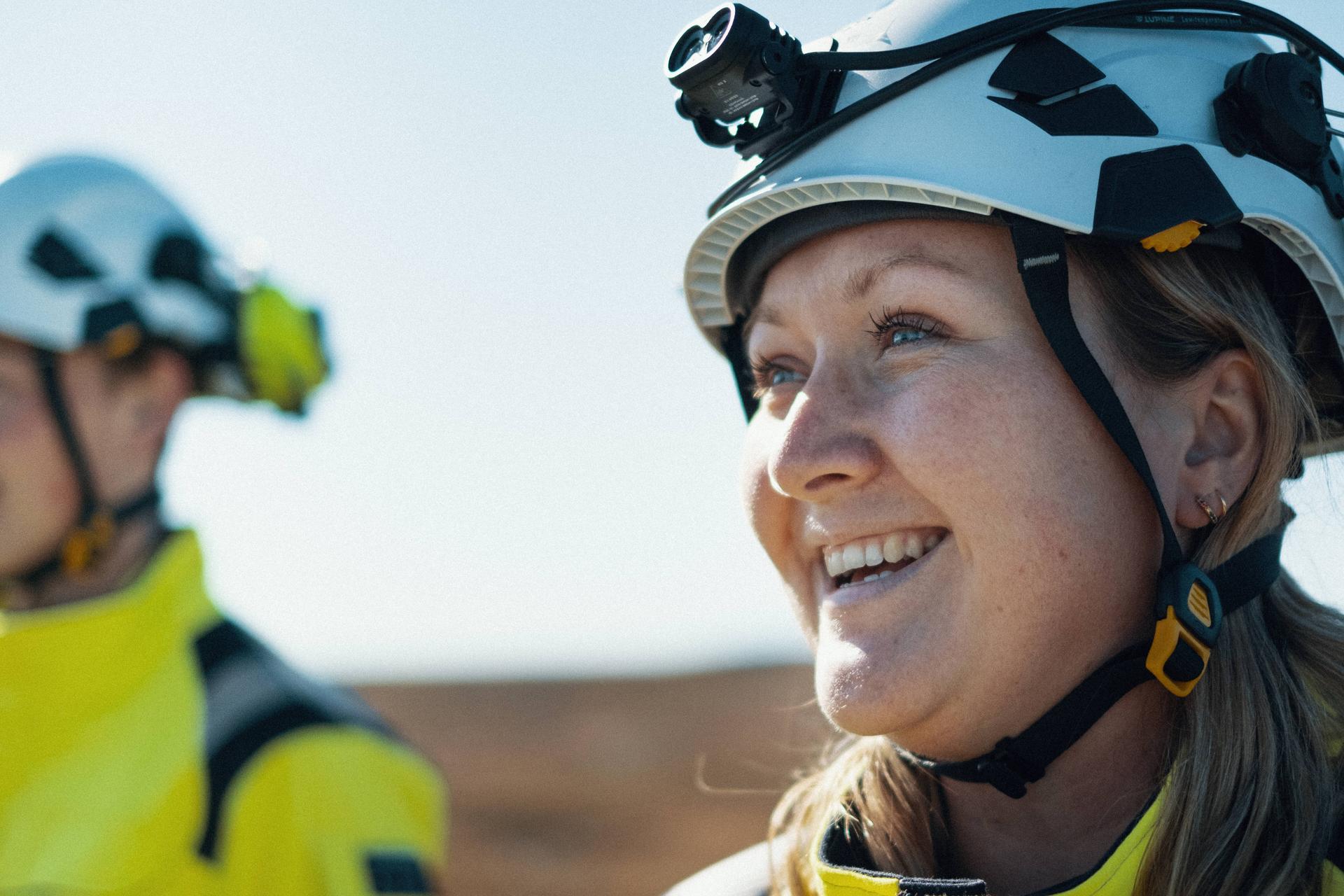
Our goals and status 2022
| Goal | Results 2022 | Satisfaction | Remarks |
|---|---|---|---|
| Increase knowledge of diversity in the Group | - | KPIs will be established in 2023. | |
| Increase the proportion of women to >25% by 2025 | 22% | The proportion of female employees in the Group (excluding Hafslund Oslo Celsio) increased from 22% in 2021 to 25% in 2022. Hafslund Oslo Celsio has a somewhat lower proportion of female employees, which reduces the total to 22%. | |
| No known cases of harassment or discrimination | 0 |
Other sustainability priorities
Most of the topic areas that are important to Hafslund within sustainability have a close link to the strategic focus areas presented. However, there are several important sustainability topics that are not directly linked to one strategic initiative.
Contribution to society and local value creation
Hafslund’s business activities create substantial value for society, for example in the form of tax revenues for the Norwegian State and profits that go towards society at large, since the Group is 100 per cent owned by the City of Oslo. The core business supplies society with renewable energy and maintains the security of supply in Norway. Hafslund is a large employer and provides many jobs across all of Southern Norway.
Our approach and initiatives
Our approach and initiatives
As a power producer, we utilise the country’s natural resources and are therefore subject to special taxation in the form of resource rent tax. This provides society with significant tax revenues each year. The City of Oslo is the sole owner of the Hafslund Group, and the dividend paid from Hafslund to the City of Oslo is used to cover welfare services for the residents of Norway’s capital city. The capital retained at Hafslund is used to develop new renewable power and other investments that are in line with the Group’s strategy.
Value creation in local communities
Hafslund maintains a close relationship with the local communities in which we operate and the host municipalities of our power plants. The Group seeks to engage in close dialogue with local communities, and endeavours to use local service providers and partners in all situations when this is possible. Using local service providers places less strain on the environment and local infrastructure, while also safeguarding local jobs.
Sponsorships
Hafslund’s sponsorship activities are managed in line with the Group’s values and strategic goals. The Group provides sponsorship support to associations within sports, outdoor activities and culture for children and young people, and especially in areas close to our locations, power plants and facilities. The Group also provides support to stakeholders and activities that focus on climate and the environment, and has collaborative agreements with the environmental NGOs Zero and Bellona.
Some of the major sponsorship agreements that were signed in 2022 include:
- Hafslund became the main partner for the Association for the Promotion of Skiing (Skiforeningen) in Oslo. Hafslund and the Skiforeningen are planning to collaborate on a range of initiatives from electric bike chargers to electric snowcats.
- Hafslund Oslo Celsio entered into a sponsorship agreement with Klemetsrud Sports Club (Klemetsrud idrettslag) and Mortensrud School to establish the Celsio Academy, which is a free sports academy for children in grades 5-7 at Mortensrud, Klemetsrud and Stenbråten schools.
Hafslund Hovedgård
Since the City of Oslo is the sole owner of the Hafslund Group, the dividend paid from Hafslund to the City of Oslo is used to cover welfare services for the residents of Norway’s capital city.
Since the City of Oslo is the sole owner of the Hafslund Group, the dividend paid from Hafslund to the City of Oslo is used to cover welfare services for the residents of Norway’s capital city.

Status 2022
| Goal | Results 2022 | Remarks |
|---|---|---|
| Local taxes and fees | NOK 2,079 million | Paid natural resource tax, property tax, licence fees and the advantage of concessionary power to host municipalities/affected municipalities. |
| Taxes and fees to the State | NOK 4,960 million | Paid resource rent tax, ordinary income tax, licence fee, NOx tax, incineration fee and employer's National Insurance contributions to the State. |
| Dividend to owner | NOK 1,750 million | Paid dividend to the City of Oslo. |
Value creation for 2022 based on profit or loss figures
The diagram on the next page distributes the amounts recognised in the profit and loss statement, instead of the paid amounts which have been reviewed above. The value creation of the Hafslund Group has been calculated by taking the revenues recognised for 2022 (revenues and other income, profit/loss from equity-accounted investees, realised and unrealised gains and losses on currency and interest income), and deducting energy purchases and transmission costs, as well as value changes of land compensation rights. Distribution to owners includes the decided repayment of subordinated loans to other than own subsidiaries, in addition to dividends.
Total value creation corresponds to NOK 22 billion.
Third-party safety
We take the safety of those who move in and around our power plants and facilities seriously, and our clear objective is that there shall be no injuries or accidents to third parties as a result of the Group's activities.
Our approach and initiatives
The Group continually works to ensure that the watercourse facilities are safe for the public and to reduce the risk of accidents and incidents taking place near the watercourses. Risk and vulnerability analyses of public safety are regularly carried out.
We assign particular attention to safety measures in and around the hydropower plants. The most common safety measures are permanent fences, barriers and signs. Every year, temporary fences and warning signs are erected in areas with weakened ice. Information is also provided online, advertisements are placed in local newspapers, and notice is given via other channels that the ice may be unsafe on regulated watercourses.
Hafslund is a developer with a high level of activity within the conversion and rehabilitation of dams and power plants and the construction of new facilities. The Group goes to great lengths in all projects to protect the safety of the general public by erecting signs and barriers and developing procedures to ensure that the work is performed within defined areas. A safe job analysis (SJA) is also carried out for all jobs, which includes a risk assessment for third parties.
Hydroelectric power plants themselves also contribute to protecting the surrounding area. The reservoirs help reduce the risk of flooding in the watercourses and the associated damage. Hafslund actively uses the reservoirs to mitigate flooding by reducing and levelling out flooding during periods with heavy precipitation and inflow. There is a close and regular dialogue with the NVE, regulatory associations, public authorities and affected parties in the event of flood alleviation and flood situations.

Our goal is that there shall be no injuries or accidents to third parties as a result of the Group’s activities.
Our goals and status 2022
| Goal | Results 2022 | Satisfaction | Remarks |
|---|---|---|---|
| No injuries or accidents to third parties as a result of the Group's activities | 0 | No injuries to third parties in 2022 |
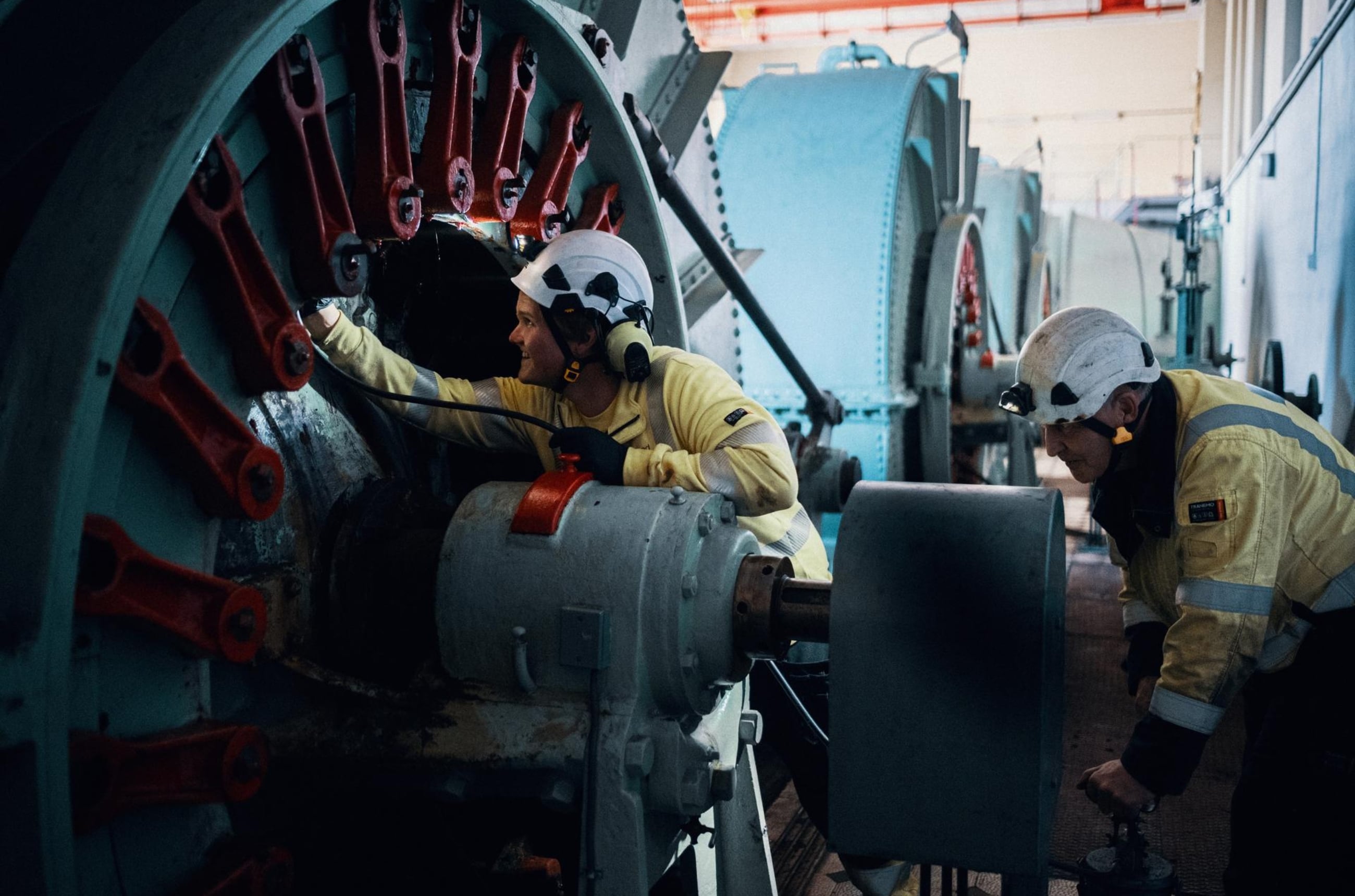
Responsible procurement practices
Hafslund wishes to contribute to the safeguarding of human rights and employee conditions in the value chain, and strives to have good routines for setting requirements and following up suppliers with regard to human rights and workers’ rights. It is important for Hafslund to maintain high ethical standards in all business operations.
Our approach and initiatives
The Oslo Model
The Group has implemented the Oslo Model, which is a collective term for a number of good practice provisions that are incorporated into contract terms for the purchase of goods and services, and building and construction. Hafslund sets clear requirements for its suppliers within all product and service areas. All suppliers and their subcontractors shall conduct their activities in accordance with nationally and internationally recognised principles and guidelines relating to human and workers’ rights, corruption and health, safety and the environment.
Setting requirements
The Group’s companies conduct procurements in accordance with good business practice. Separate ethical guidelines have been established for suppliers based on international ILO and UN conventions. The choice of suppliers and partners is an important part of the work for a sustainable business and industry, and Hafslund wants to take greater responsibility for the environmental and social impact of the value chain that the Group is a part of.
Hafslund has adopted standards for socially responsible procurement to prevent labour market crime and social dumping in the building and construction industry. These standards are intended to ensure decent working conditions for employees and contractors, limit the number of links in the supply chain and promote recruitment of apprentices and trained professionals.
The Norwegian Transparency Act
A key project in 2022 was to strengthen our due diligence work in line with the new Transparency Act, which entered into force on 1 July 2022. The purpose of the Act is to promote companies’ respect for fundamental human rights and decent working conditions in connection with the production and delivery of goods and services. Read more.
Our goals and status 2022
| Goal | Results 2022 | Satisfaction | Remarks |
|---|---|---|---|
| No known violations of human rights or workers' rights in the value chain | 0 | Hafslund does not currently have a system for detecting serious violations, however efforts are being made to get this in place. | |
| Conduct supplier audits that include sustainability issues | 0 | No supplier audits regarding sustainability conducted in 2022. This work will be systematised and there will be an increased focus from 2023. |
Secure IT services and systems
Hafslund is subject to laws and regulations that set high standards for the protection of information, services, systems and production facilities. Digital and physical security are a prerequisite for ensuring that there is trust in Hafslund’s ability to provide society with a continuous power supply and to preserve the trust of owners, partners, customers and own employees.
Our approach and initiatives
The overarching goal is to maintain a secure and stable power supply and provision of IT services and systems to the Group and applicable subsidiaries, without loss of data or availability beyond acceptable downtime. Continuous modernisation and technological development are crucial for being able to respond to an increasingly more advanced and intensified digital threat landscape. In 2021, Hafslund modernised and consolidated a large part of its IT portfolio and IT security solutions. New and more modern solutions were established and further developed. This work was further developed in 2022.
Information security and privacy
Hafslund continually works to improve information security in order to reduce the risk of undesirable incidents, sabotage, damage and vandalism. Everyone needs to be confident that Hafslund fulfils its statutory and regulatory obligations, and that the Group has established measures to ensure the protection of the confidentiality, integrity and availability of information, services, systems and facilities.
Hafslund takes information security and privacy seriously, and in 2022 implemented several projects, improvement initiatives and activities to address a more intensified risk and threat landscape.
Work with information security at Hafslund
Information is something that is of very high value to Hafslund. We protect the value this information represents with structured processes and measures in accordance with ISO/IEC 27001 and an information security management system (ISMS). This is an important tool for both management and operational work within information security. The management system is designed to ensure that Hafslund complies with applicable laws and regulations, and that active and preventive work on information security is being carried out.
Privacy
Privacy at Hafslund is important for protecting and processing information about employees, customers and partners. The risk of privacy breaches relates to possible deficiencies and non-conformities regarding compliance with requirements in data protection laws and regulations that have been imposed. In 2022, Hafslund continued its work on ensuring that the Group complies with data protection requirements. Routines, procedures and frameworks have been further developed and integrated into the Group’s information security management system.
Information security risk management
Information security risk management is a continual and ongoing process. The Group relies on the national risk and threat assessments from the Norwegian Intelligence Service (NIS), Norwegian Police Security Service (PST) and National Security Authority (NSM), and uses ISO/IEC 27005 as a framework for risk assessment and management. The ownership of risk is placed in the line and service owner organisation. Information security risk management is integrated into day-to-day management and operations, and, by virtue of their roles, all managers have an implicit responsibility for supervising information security within their area of responsibility and authority. This includes monitoring that implemented security measures function as intended. This responsibility also applies when security tasks are entrusted to contractual partners and other enterprises.
Supplier and third-party risks
The security situation in Ukraine has resulted in a heightened risk and threat landscape. This has led to a stronger need for closer follow-up and dialogue with subcontractors that provide services, systems and equipment to the Group. Hafslund has had a higher level of preparedness and ongoing dialogue with government authorities, partners and suppliers regarding the situation and changes in the risk landscape.
Personnel security
Personnel security includes the risk of personnel abusing employment relationships and legitimate access for nefarious and unauthorised purposes. Hafslund is required by law to conduct background checks in connection with recruitment and hiring processes. Personnel security at Hafslund therefore has to be maintained and safeguarded through robust processes involving the entire employment arrangement, including background checks, duty of confidentiality, information and training, and access based on the principle of least privilege (PoLP). Based on the international security situation in 2022, the Group has further developed the procedures with clearer guidelines for the recruitment and employment of personnel from so-called high-risk countries.
Physical security
Strict requirements are imposed on Hafslund through laws and regulations for the physical security of services, systems, locations and production facilities. The information security management system specifies defined requirements for the physical security of IT, with combinations of zoning, access control, monitoring and detection, and the ability to respond to unauthorised movement, access and intrusion.
The physical security of the company’s physical assets, properties and production facilities is continuously improved and further developed in accordance with requirements that are imposed and changes in the threat and risk landscape. In 2022, the situation in Ukraine resulted in greater attention being paid to physical security and the need for increased vigilance with regard to undesirable behaviour and access to the Group’s locations, power plants and facilities. Hafslund has followed the recommendations and advice given by the government authorities and national security agencies.
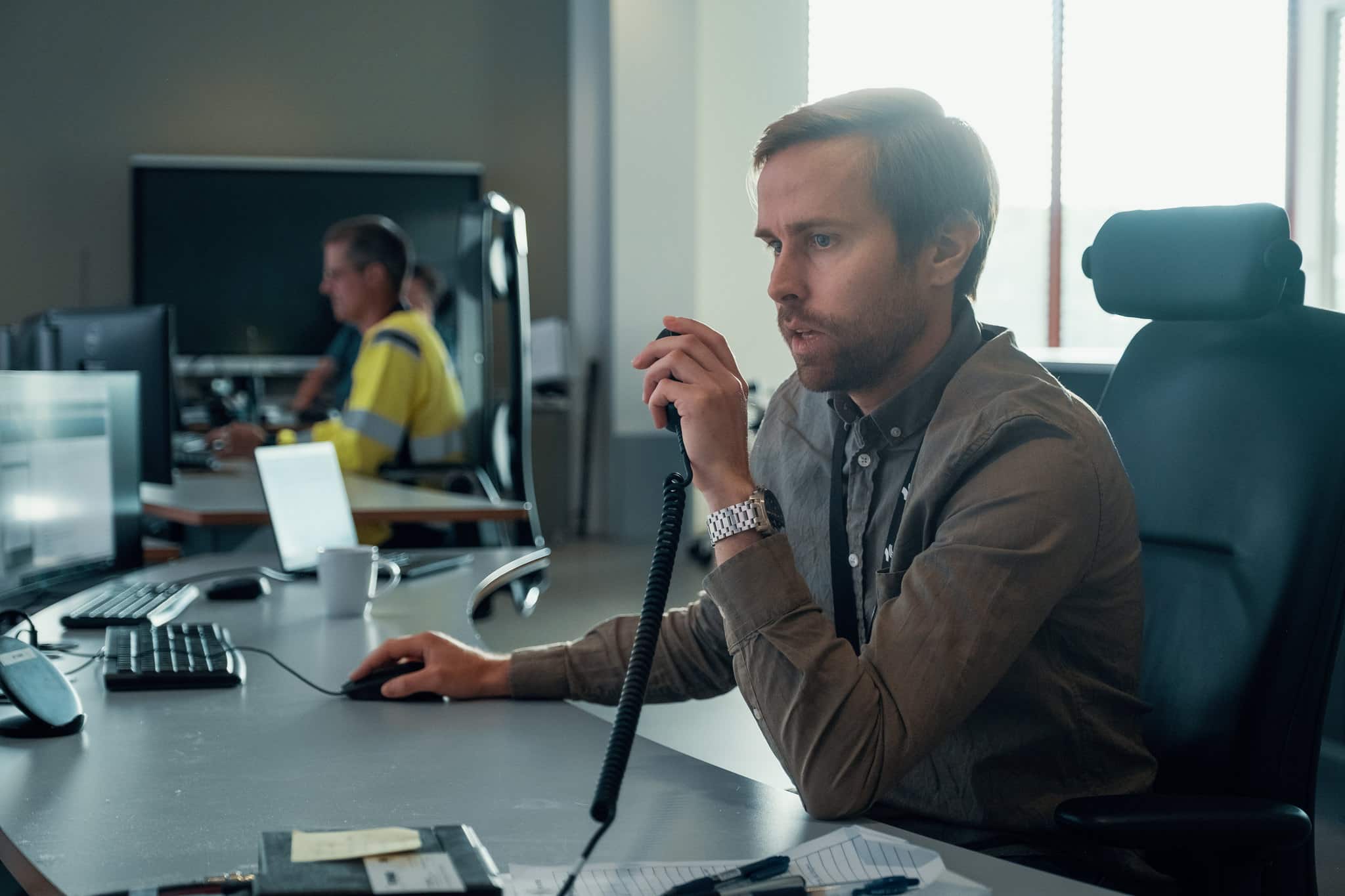
Our goals and status 2022
| Goal | Results 2022 | Satisfaction | Remarks |
|---|---|---|---|
| No IT security incidents that were not dealt with | 0 | All IT security incidents were dealt with and followed up. | |
| No IT security incidents with serious consequences | 2 | Two registered incidents that can be categorised as being more serious. Both incidents were dealt with and followed up with incident reports that included follow-up points. | |
| Minimum 1 IT emergency response exercise held | 3 | A total of 3 IT emergency response exercises were held in 2022. |
Ethics and anti-corruption
Hafslund has a zero tolerance policy towards corruption and shall actively work with its commitments to ethics and anti-corruption. The greatest risk of corruption in any company can be said to be corruption that is not visible, and important risk factors are inadequate information about and access to whistleblowing channels, insufficient training in ethics and anti-corruption, and a lack of control mechanisms for identifying potential cases of corruption.
Our initiatives
All Hafslund employees must sign ethical guidelines upon employment. Hafslund’s ethical guidelines include rules for good personal conduct, good business practices, and notification and management of potential breaches. The guidelines provide directions for how employees should interact, both internally and externally. They apply to all employees in the Group and those acting on behalf of Hafslund, for example, directors and hired consultants. The Group has an external whistleblowing channel for reporting concerning incidents. In 2023, an e-learning platform will be established for ethical guidelines in the Group and dilemma training will be held for all employees.

All Hafslund employees must sign ethical guidelines upon employment.
Our goals and status 2022
| Goal | Results 2022 | Satisfaction | Remarks |
|---|---|---|---|
| All employees have signed ethical guidelines | - | All employees must sign ethical guidelines upon employment. There is currently a lack of registration and further work is required to have this in place. | |
| No known instances of corruption | 0 |
Indicator tables for sustainability
The indicator tables for the sustainability indicators are divided according to the important sustainability topics and paint a comprehensive picture of Hafslund’s sustainability work.
Figures from 2021 are only included for Hafslund Eco Vannkraft and Hafslund Vekst, because Hafslund Oslo Celsio was not part of the Group in 2021.
Indicator table: The road towards climate positivity
| Indicator | Unit | Result 2022 | Result 2021 | Remarks 2022 |
|---|---|---|---|---|
| Greenhouse Gas Emissions Scope 1 | ||||
| Hydropower | tCO₂e | 1,053 | 619 | Increase in emissions from hydropower compared to 2021 due to two significant leaks of SF6 gas. |
| District heating | tCO₂e | 5,859 | - | Emissions from district heating relate to the use of LNG as peak load. |
| Waste incineration | tCO₂e | 197,777 | - | |
| Greenhouse Gas Emissions Scope 2 (market-based) | ||||
| Hydropower | tCO₂e | 0 | 0 | Hafslund Eco Vannkraft purchases guarantees of origin for its entire consumption. |
| District heating | tCO₂e | 129,033 | - | In 2022, Hafslund Oslo Celsio did not purchase guarantees of origin for its consumption of electricity in district heating and waste incineration. |
| Waste incineration | tCO₂e | 17,941 | - | |
| Greenhouse Gas Emissions Scope 2 (location-based) | ||||
| Hydropower | tCO₂e | 224 | 243 | |
| District heating | tCO₂e | 3,504 | - | |
| Waste incineration | tCO₂e | 488 | - | |
| Greenhouse Gas Emissions Scope 3 | ||||
| Hydropower | tCO₂e | 84,704 | 2,954 | Expansion of Scope 3 in 2022. The largest emissions are related to ownership in Eidsiva, purchased goods and services and capital goods. |
| District heating + waste incineration | tCO₂e | 23,187 | - | |
| CO₂ intensity district heating | gCO₂e/kWh | 15.7 | - | Calculated based on the methodology in accordance with the EPD regulations. |
| Energy consumption | ||||
| Hydropower | GWh | 22.6 | 16.4 | |
| District heating + waste incineration | GWh | 1,919.9 | - | |
| Share of electric vehicles | Per cent | 33 | 17 | |
| Biogenic emissions | tCO₂e | 188,551 | - | Only applies to emissions from waste incineration. Renewable fuels not included |
Indicator table: The road towards nature positivity
| Indicator | Unit | Result 2022 | Result 2021 | Remarks 2022 |
|---|---|---|---|---|
| Land restored or improved | m2 | 847 | - | New spawning grounds in the Aurland watercourse. |
| Number of new developments in areas defined as encroachment-free nature | Number | 0 | - | New indicator. |
| Number of violations of licence conditions and description | Number and remarks | 3 | 3 | Vetlebotvatn in Aurland: Violation of lowest regulated water level for summer for two hours on 5 September 2022. Moelv power plant in Ringsaker: The minimum water flow requirement past the power plant was not complied with on four occasions from 8 December 2021 to 13 December 2021. Raudalsvatn in Skjåk: Deviation from minimum water flow in Framrusti below Raudalsvatn between 1pm and 6pm on 1 July 2022. |
| Costs for watercourse-related R&D and voluntary nature surveys | NOK | 5,732,000 | - | New indicator. |
| Affected rivers with anadromous fish | Number | 3 | 3 | |
| Affected national salmon watercourses | Number | 0 | 1 | |
| Environmental audits carried out | Number | 22 | 32 | |
| Environmental measures implemented | Number | 22 | 7 | |
| Environmental measures implemented, including voluntary | Number | 19 | 3 | |
| Environmental studies carried out | Number | 37 | 41 | |
| Environmental studies carried out, including voluntary | Number | 33 | 36 | |
| Release of salmon roe | Number | 33,700 | 350,000 | |
| Migration in fish ladders and migration routes. Number of fish ladders that are monitored | Number | 10 | 9 | |
| Closed watercourse installations returned to natural conditions | Number | 0 | 0 | In 2022, the NVE issued a positive recommendation to shut down the Hunsjø Reservoir and reduce the regulation water level for Hyllsjøen. The matter is now being processed by the Ministry of Petroleum and Energy. |
| Voluntary release of minimum water flow to protect the fish in the watercourses | NOK million | 23.3 | 12.4 | The voluntary release in Hemsil was replaced by an imposed release. In Innlandet, there is the self-imposed trial regulation in Hunderfossen, and self-imposed minimum water flow in winter in Mesna and Sagnfossen. |
| Number of incidents involving emissions into the air/soil/water, and description | Number and remarks | 5 | 7 | In 2022, there were five major or minor oil spill incidents near Hafslund Eco Vannkraft's plants, which resulted in the total discharge of approximately 530 litres of oil. |
| NOx emissions (Hafslund Oslo Celsio) | kg | 335.4 | - |
Indicator table: Driving force for renewable energy through good stakeholder dialogue
| Indicator | Unit | Result 2022 | Result 2021 | Remarks 2022 |
|---|---|---|---|---|
| Hydropower’s reputation among the general public | Per cent | 89 | 90 | Support for hydropower is consistently high among the general public. Source: Kantar's Climate Barometer 2022 |
| Percentage of large hydropower projects that have been commenced which include stakeholder dialogue out of consideration to society, the public and the environment | Per cent | 95 | - | New indicator. |
Indicator table: Efficient and circular use of materials and resource utilisation
| Indicator | Unit | Result 2022 | Result 2021 | Remarks 2022 |
|---|---|---|---|---|
| Quantity of hazardous waste | - | |||
| Hafslund Eco Vannkraft, Hafslund Vekst and the Group | Tonnes | 8 | - | New indicator. |
| Hafslund Oslo Celsio | Tonnes | 17,791 | - | New indicator. For Hafslund Oslo Celsio, fly ash from waste incineration amounts to 17,666 tonnes. |
| Quantity of non-hazardous waste | - | |||
| Hafslund Eco Vannkraft, Hafslund Vekst and the Group | Tonnes | 828 | - | New indicator. |
| Hafslund Oslo Celsio | Tonnes | 62,138 | - | New indicator. The majority of Hafslund Oslo Celsio's waste consists of bottom ash (slag) from waste incineration. The ash is further treated by other operators, where metals are extracted and recycled (close to 4,600 tonnes of various metals). |
| Sorting rate | - | |||
| Hafslund Eco Vannkraft, Hafslund Vekst and the Group | Per cent | 89 | - | Sorting rate = Quantity of sorted waste/total quantity of waste (both sorted and unsorted) X 100 |
| Hafslund Oslo Celsio | Per cent | - | - | |
| - | ||||
| Sorting rate for large hydropower projects | Per cent | 91 | - | Calculated from four out of six of the largest construction projects. |
| Quantity of waste treated at waste incineration plants | Tonnes | 355,686 | - | Total Klemetsrud and Haraldrud. |
Indicator table: Production of clean energy
| Indicator | Unit | Result 2022 | Result 2021 | Remarks 2022 |
|---|---|---|---|---|
| Production of power | GWh | 13,800 | 18,315 | Hafslund's share of production in all power plants. |
| Share of renewable power production | Per cent | 100 | 100 | |
| Production of district heating | GWh | 1,807 | - | |
| Share of renewable district heating | Per cent | 43.2 | - | |
| Share of carbon-neutral district heating | Per cent | 55.3 | - | |
| Production of Guarantees of Origin | GWh | 13,200 | 18,150 | |
| Production of electricity certificates | GWh | 780 | 852 | |
| Power losses as a result of regulatory revisions | GWh | 14.7 | 6.7 | Power loss of 11.6 GWh/year in the Hols regulation and 2.9 Wh/year in the 24-hour regulation. |
Indicator table: Investments in clean energy
| Indicator | Unit | Result 2022 | Result 2021 | Remarks 2022 |
|---|---|---|---|---|
| Increased installed capacity - power production | MW | 9.9 | 118.9 | Mork power plant was completed in 2022. |
| Increased installed capacity - district heating | MW | 50 | - | Conversion of older facilities to renewable. |
| Reinvestment in production facilities (upgrades and expansions) | GWh | 13 | 28.2 | Aurland 1, Unit 2. |
| Investment in new production | GWh | 43 | 412 | Mork power plant was completed in 2022. |
| Renewable energy projects in planning phase | GWh | 700 | 26 | Approximate figures that include: Sarp2, FKF5, Hemsil 2, Longavotn, Kåja, Storrusten, Tunna, Grotli, Øyangen and Bjørkum. |
Indicator table: Security of supply
| Indicator | Unit | Result 2022 | Result 2021 | Remarks 2022 |
|---|---|---|---|---|
| Security of supply at Celsio | Per cent | 99.97 | - | Only unplanned stoppage of supply gives 99.99%. |
Indicator table: Safety for our employees
| Indicator | Unit | Result 2022 | Result 2021 | Remarks 2022 |
|---|---|---|---|---|
| Absence due to injury per million working hours | ||||
| Hafslund (the entire Group) | H1-value | 1.2 | - | |
| Hafslund Eco Vannkraft | H1-value | 0.9 | 1 | |
| Hafslund Celsio | H1-value | 1.6 | - | |
| Injuries per million working hours | ||||
| Hafslund (the entire Group) | H2-value | 2.9 | - | |
| Hafslund Eco Vannkraft | H2-value | 3.7 | 7 | |
| Hafslund Celsio | H2-value | 1.6 | - | |
| Days of absence per million working hours | ||||
| Hafslund (the entire Group) | F-value | 3.5 | - | |
| Hafslund Eco Vannkraft | F-value | 4.6 | 203 | |
| Hafslund Celsio | F-value | 1 | - | |
| Registered undesirable incidents and proposed improvements | ||||
| Hafslund (the entire Group) | Number | 1,325 | - | |
| Hafslund Eco Vannkraft | Number | 857 | 1,279 | |
| Hafslund Celsio | Number | 468 | - | |
| Safety talks at Celsio | Number | 126 | - |
Indicator table: Attractive and developing workplace
| Indicator | Unit | Result 2022 | Result 2021 | Remarks 2022 |
|---|---|---|---|---|
| New hires | ||||
| Hafslund Eco Vannkraft, Hafslund Vekst and the Group | Number | 69 | 35 | |
| Hafslund Oslo Celsio | Number | 23 | - | |
| Turnover | ||||
| Hafslund Eco Vannkraft, Hafslund Vekst and the Group | Per cent | 6.5 | 3.4 | This includes retirements. |
| Hafslund Oslo Celsio | Per cent | 4.3 | - | |
| Proportion of managers who have completed leadership development programmes | ||||
| Hafslund Eco Vannkraft, Hafslund Vekst and the Group | Per cent | 100 | - | New indicator. |
| Hafslund Oslo Celsio | Per cent | 93 | - | New indicator. |
| Use of whistleblowing channel | Number/year | 0 | 0 | |
| Sick leave | Per cent | 3.8 | 2.8 | Still low sick leave compared to the national average. The increase from last year is probably due to increased short-term sick leave as a result of covid-19. |
Indicator table: Space for differences and equal opportunities for all
| Indicator | Unit | Result | Result 2021 | Remarks 2022 |
|---|---|---|---|---|
| Proportion of female employees in the Group | Per cent | 22 | 22 | The proportion of female employees has increased at Hafslund Eco Vannkraft and Hafslund Vekst over the past year, however this is brought down slightly by the lower proportion of female employees at Hafslund Oslo Celsio. |
| Proportion of women in the Group management team | Per cent | 50 | - | New indicator. |
| Proportion of women in executive positions | Per cent | 32 | 28 | |
| Number of incidents of discrimination or harassment | Number | 0 | - | New indicator. |
| Number of instances of discrimination or harassment that were processed and for which an action plan was established | Number | 0 | - | New indicator. |
Indicator table: Third-party safety
| Indicator | Unit | Result 2022 | Result 2021 | Remarks 2022 |
|---|---|---|---|---|
| Injuries to third parties as a result of the company’s activities | Number | 0 | 0 | |
| Incidents reported to the NVE (accidents and incidents), cf. NVE reporting form, Section 7-11 of the Dam Safety Regulations | Number | 1 | 0 | |
| Completed risk and vulnerability assessments (RVAs) for public safety according to plan, cf. Section 7-6 in the Dam Safety Regulations | Number | 4 | 21 | |
| Incidents with notification to the public of flood alleviation according to established procedure | Number | - | 0 | |
| Emergency response exercises to ensure a high standard for internal preparedness and flood management | Number | 31 | 23 | Emergency response exercises. Excluding IT exercises and practical team exercises. |
| Applications to the NVE for deviations from regulation schedules or conditions in order to reduce risk of flood damage in time | Number | 1 | 1 | Approval of application for advance flood alleviation from Ustevatn to Rødungen South to prevent possible damaging floods downstream from Ustevatn. |
| Incidents reported to the Norwegian Directorate for Civil Protection and Emergency Planning (DSB) (accidents and incidents), cf. form for reporting accidents and incidents, Section 8 of the Norwegian Safety regulations relating to the maintenance and operation of electrical installations | Number | 0 | 0 |
Indicator table: Contribution to society and local value creation
| Indicator | Unit | Result 2022 | Result 2021 | Remarks 2022 |
|---|---|---|---|---|
| Value creation and distribution to host municipalities in the form of direct taxes and fees | NOK million | 447 | 474 | Paid during the year. Includes natural resource tax and property tax. |
| Contributions to host municipalities/county authorities in the form of concessionary power benefit | NOK million | 1,549 | 586 | Paid during the year. |
| Contributions to municipalities/county authorities in the form of licence fees | NOK million | 83 | 82 | Paid during the year. |
| Value creation and distribution to the Norwegian State in the form of direct taxes and fees | NOK million | 4,960 | 132 | Paid during the year. Tax, employer's National Insurance contributions, licence fee, NOx tax, and incineration fee. |
| Total remuneration to employees | NOK million | 751 | 472 | |
| Return to owner (City of Oslo) in the form of dividend | NOK million | 1,750 | 850 | Dividend paid in 2022. |
Indicator table: Responsible procurement practices
| Indicator | Unit | Result 2022 | Result 2021 | Remarks 2022 |
|---|---|---|---|---|
| Number of known violations of human rights or workers' rights | Number | 0 | 0 | |
| Number of supplier audits conducted, which includes sustainability issues | Number | 0 | 0 | No audits conducted. Work with due diligence assessments and follow-up of suppliers, including supplier audits, is to be strengthened in 2023. This may affect the results going forward. |
| Percentage of suppliers that have signed ethical guidelines for suppliers | Per cent | - | - | Suppliers sign ethical guidelines upon entering into contract. Better systems for following up and reporting on this will be introduced. |
Indicator table: Focus on ethics and anti-corruption
| Indicator | Unit | Result 2022 | Result 2021 | Remarks 2022 |
|---|---|---|---|---|
| Employees who have pledged to comply with the company's ethical guidelines | ||||
| Hafslund Eco Vannkraft, Hafslund Vekst and the Group | Per cent | - | - | All new employees pledge to comply when signing employment contract. Complete overview of the percentage of non-compliance for the Group, excluding Hafslund Oslo Celsio. At Hafslund Oslo Celsio, 75.8% have signed ethical guidelines. |
| Hafslund Oslo Celsio | Per cent | 75.8 | - | |
| Number of confirmed breaches of ethical guidelines | Number | 0 | 0 |
Indicator table: Secure IT services and systems
| Indicator | Unit | Result 2022 | Result 2021 | Remarks 2022 |
|---|---|---|---|---|
| Number of IT security incidents that were not dealt with | Number | 0 | - | New indicator. All IT incidents were dealt with and followed up. |
| Number of IT security incidents with serious consequences | Number | 2 | - | New indicator. Two registered incidents that can be categorised as being more serious. Both incidents were dealt with and followed up with incident reports that included follow-up points. |
| Number of IT emergency response exercises | Number | 3 | - | New indicator. A total of 3 IT emergency response exercises were held in 2022. |



